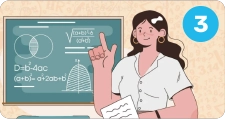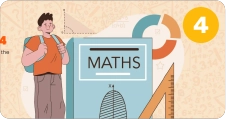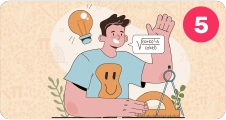Join us on an intriguing journey through the realm of math as we explore the factors of 32. These are the essential components that, when multiplied together, form the number 32. Understanding these factors is crucial for number theory, and it’s easy to get the hang of it. Whether you’re passionate about mathematics or just brushing up on your basic skills, our guide will shine a light on the distinct characteristics of 32. Dive in as we set off on this informative adventure to decode the mysteries of 32.
What Are the Factors of 32?
The factors of 32 are the distinct whole numbers that pair up perfectly and multiply to make 32. Think of them as unique pieces of a puzzle that fit together, revealing the complete picture of 32. The uniqueness of these factors lies in their multiplicative relationships: 1 and 32, 2 and 16, 4 and 8 – all these pairs multiply to 32. Just like a symphony where each note contributes to a harmonious whole, these factors join forces seamlessly to form the integer 32 without any leftovers or fractions.
Positive & Negative Pair Factors of 32:
| Factor 1 | Factor 2 |
|---|---|
| 1 | 32 |
| 2 | 16 |
| 4 | 8 |
| 8 | 4 |
| 16 | 2 |
| 32 | 1 |
| Factor 1 | Factor 2 |
|---|---|
| -1 | -32 |
| -2 | -16 |
| -4 | -8 |
| -8 | -4 |
| -16 | -2 |
| -32 | -1 |
How to Find the Factors of 32?
Finding the factors of 32 is a simple process that involves a bit of division. Here’s how you can do it:
- Start Small: Kick off with the minimum factor, which is always 1. Since 1 time, any number returns that number, we know 1 and 32 are a matching factor pair.
- Step Up: Next, try dividing 32 by 2. It’s a perfect fit since 2 times 16 is 32, adding another factor pair to our list.
- Keep Going: Skip to 4, and you’ll see that 4 times 8 also gives us 32. So, 4 and 8 are factors as well.
- Square Root Check: There’s a handy trick – you only need to check up to the square root of 32 because any factor beyond that point would be paired with a factor more minor than the square root, which we’ve already checked.
- Leverage Exponents: Since 32 is 2 raised to the power of 5 (2^5), any lower exponents of 2 will also be factors. So, we’ve already covered 2 (2^1) and 4 (2^2), and we’ve just found 8 (2^3) and 16 (2^4).
- Complete the List: Once you’ve tested all numbers up to the square root and all the relevant exponents of 2, your list is complete. For 32, the only factors are the ones we’ve identified.
- Consider Negatives: If you’re including negative factors (which isn’t always necessary), remember that every positive factor has a negative counterpart.
If you go through these steps, you will discover the factors of 32 to be: 1, 2, 4, 8, 16, and 32, along with their negative counterparts: -1, -2, -4, -8, -16, and -32.
Prime Factorization of 32
Prime factorization is the process of breaking down a number into its smallest prime number factors. Here’s how you can find the prime factorization of 32, step by step:
- Start with the smallest prime: The smallest prime number is 2, and since 32 is an even number, we start by dividing it by 2.
- Divide by 2: Take 32 and divide it by 2, which equals 16. We’ve just found that 2 is a prime factor of 32.
- Repeat the division: Now, take the quotient from the first division, which is 16, and divide it by 2 again. This gives us 8. So another 2 is a prime factor.
- Continue dividing by 2: Keep dividing the quotient by 2 until you can no longer divide evenly. So you’ll divide 8 by 2 to get 4, then 4 by 2 to get 2, and finally, 2 by 2 to get 1.
- List all the 2’s: Every time you divided by 2, you found another prime factor. Since you divided by 2 five times (32 ÷ 2 ÷ 2 ÷ 2 ÷ 2 ÷ 2 = 1), 2 is a prime factor five times over.
- Write the prime factorization: You can now express 32 as 2 raised to the power of 5, since you multiplied five 2s together to get 32. So, the prime factorization of 32 is 2^5.
To sum up, the prime factorization of 32 is finding the prime numbers that multiply together to make 32. In this case, since 32 is a power of 2, the only prime number you need is 2, multiplied by itself five times.
Summary:
Dive into the simplicity of discovering the factors of 32 with our guide. Learn the basic multiplication pairs that result in 32: 1 and 32, 2 and 16, 4 and 8, as well as their negative counterparts, forming a complete set of factors without remainder. This guide not only lists these pairs but also shows you how to systematically uncover them using division and understanding the power of 2. The prime factorization of 32 is a straightforward process, breaking it down to just 2 multiplied by itself five times (2^5). Whether you’re a math lover or refreshing your skills, this guide makes understanding factors of 32 clear and manageable.
Frequently Asked Questions about the Factors of 32
1. What are the factors of 32?
Factors of 32 refer to numbers that you can multiply together to get 32. These are 1, 2, 4, 8, 16, and 32.
2. How can I calculate the factors of 32?
To calculate the factors of 32, begin with 1 and check which numbers up to 32 can divide it evenly, meaning without any leftovers.
3. Does 32 have negative factors as well?
Yes, 32 does have negative factors. For every positive factor, there’s a negative one because a negative times a negative equals a positive. So, -1, -2, -4, -8, -16, and -32 are also factors.
4. What’s the prime factorization for 32?
The prime factorization for 32 is 2 multiplied by itself five times, or 2^5, since 2 is the only prime number that, when multiplied by itself repeatedly, gives 32.
5. Are the factors of 32 applicable in everyday life?
Indeed, factors of 32 have practical uses, like organizing things into groups or in computing where binary code relies on powers of 2, and 32 is such a power.
Moonpreneur understands the needs and demands this rapidly changing technological world is bringing with it for our kids. Our expert-designed Advanced Math course and Math Quiz for grades 3rd, 4th, 5th, and 6th will help your child develop math skills with hands-on lessons, excite them to learn, and help them build real-life applications.
Register for a free 60-minute Advanced Math Workshop today!

















